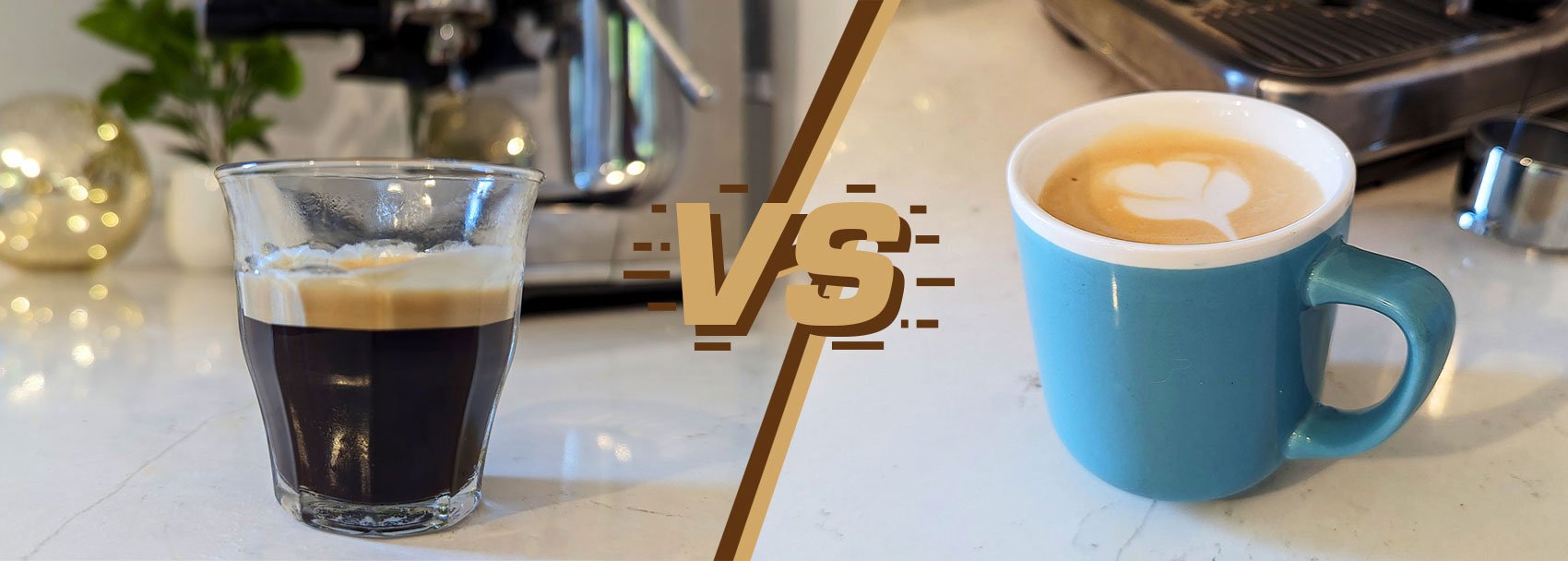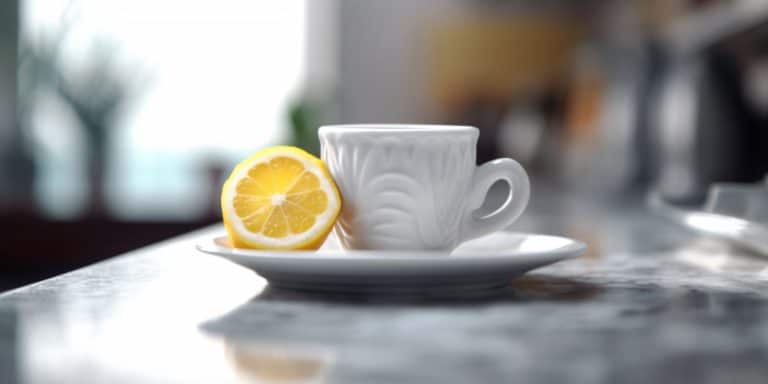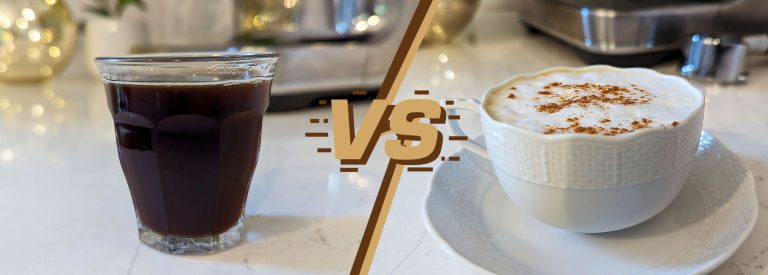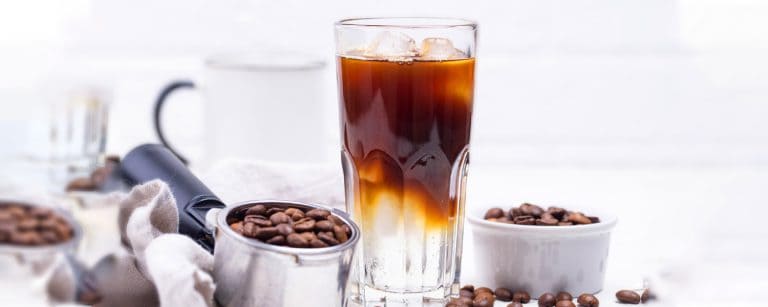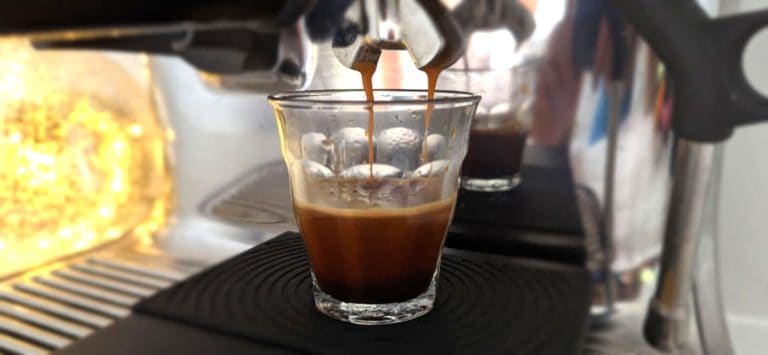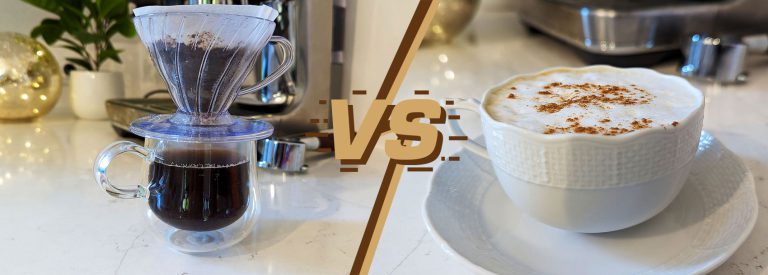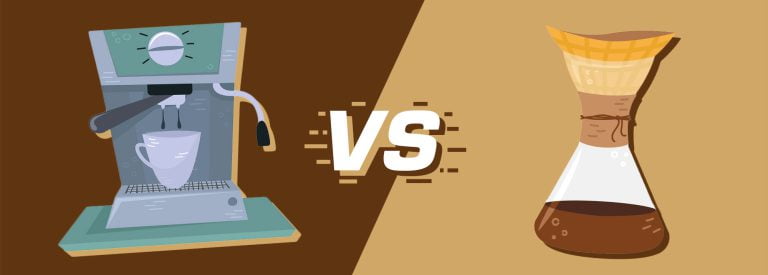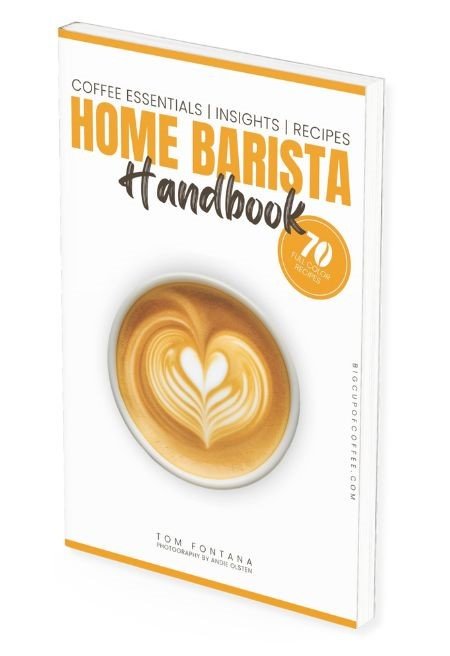Espresso vs Latte: How Milk Makes a BIG Difference
Espresso and latte are two of the most popular coffee drinks around the world with countless coffee enthusiasts sipping on them daily.
If you don’t know the difference between the two, don’t worry because I’ve been there (every barista has).
So let me shed some light on the differences between the two drinks, from their ingredients and ratios to their taste and texture. After reading, you’ll know what sets one apart from the other, and which drink suits you better.
Key takeaway – What’s the difference between an Espresso and a Latte?
An Espresso is a concentrated brew made from coffee and water, with a ratio ranging from 1:2 to 1:3, offering a robust flavor that balances the natural sweetness, bitterness, and acidity of the coffee beans. In contrast, a Latte consists of 1 part espresso to 3-6 parts milk, resulting in a creamier and milder taste, highlighted by the sweetness and creaminess of steamed milk that contrasts with the rich espresso base.
Now, we’ll explore the distinctions in depth.
What is an Espresso?
The tale of espresso started back in 1901 when Luigi Bezzera, an Italian businessman, patented the first espresso machine. His vision was to innovate a speedy yet concentrated brew by forcing hot water through coffee using high pressure. Needless to say, he was successful, and changed the course of brewing coffee forever.
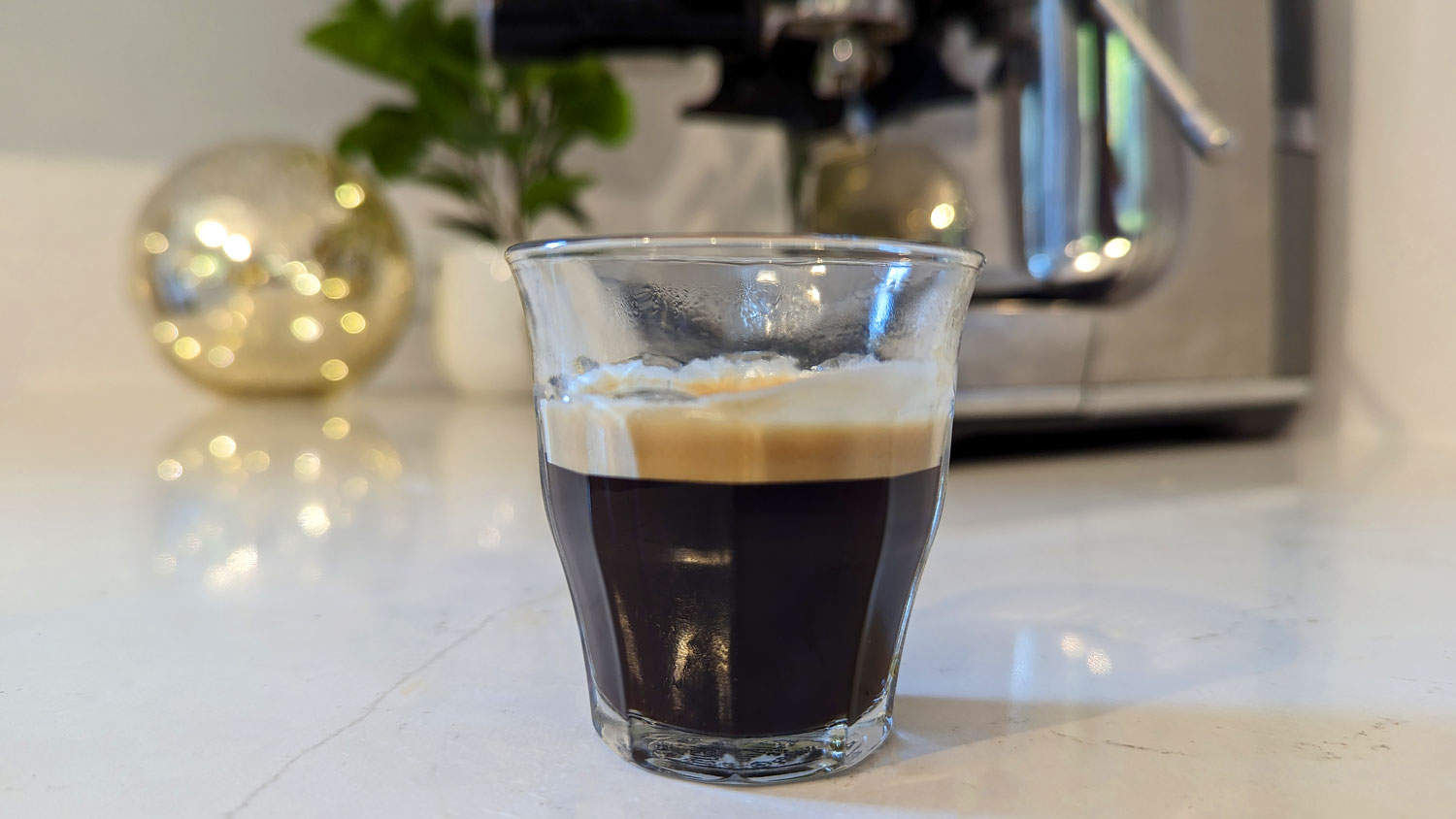
He created a rich and intense flavor profile that perfectly balances sweetness, bitterness, and acidity. If you use the right beans and dial in the espresso properly, it can be a true sensory delight with notes of chocolate or caramel and subtle hints of nuttiness, or fruity and flowery taste notes. This all depends on the beans you use and their roast level.
A texture that is dense like syrup allows you to relish every sip of this drink. Add that foamy top layer known as crema for a dash of bitterness and it’s the complete package of a coffee drink after giving it a proper swirl.
So, what really goes into an espresso? Just coffee and water.
The ratio of coffee to water usually lands between 1:2 to 1:3. For a single shot or 1 oz espresso, 7g of coffee is used while 18g goes into a double shot or 2-oz drink. The contemporary take for third-wave coffee has adopted a standard of 9g for a single shot and 18g for a double.
It’s served piping hot straight from the machine into demitasses which accommodate about 60 to 90ml (2 to 3 US fl oz) volume. A dose from each shot packs around 60 to 80 mg of caffeine along with two calories.
Here’s a quick guide on making an espresso:
- Weigh the coffee.
- Grind using a fine setting.
- Level your grinds in the portafilter.
- Tamp consistently.
- Extract the espresso.
- Analyze the taste.
For a more in-depth look, check out my guide on how to make an Espresso.
Now let’s check out latte.
What is Latte?
Latte, or Caffé Latte, is an espresso-based drink that originated from Italy. The name “caffé e latte” translates to “coffee and milk”, which accurately describes the drink. It became widely popular, especially since the 1980s, and is famous for the balance of flavors and the artistry visible through latte art designs.
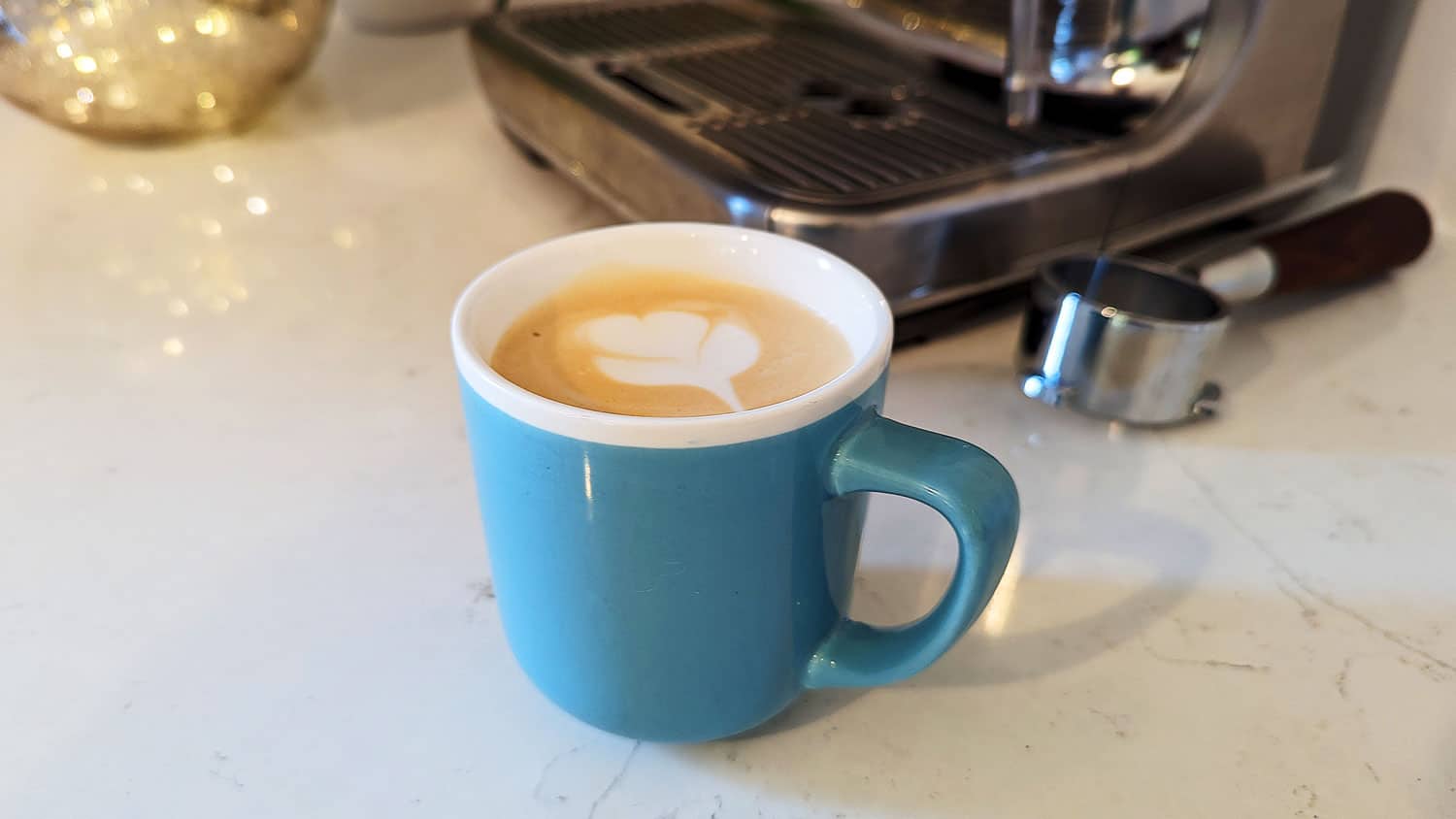
A latte consists of 1 part espresso to 3-6 parts milk, with a thin layer of microfoam on top. The serving size can range from 5 to 16 oz (150 to 480 ml), and it’s typically served in a latte mug, which has a capacity of 240-300 ml (8-10 oz). The larger mugs that can accommodate Starbucks’ mega-sized lattes are not latte mugs anymore.
While the standard ingredient is steamed milk, alternatives like soy, almond, or oat milk can also be used. I actually enjoy a soya latte more than the normal milk latte, and is pretty much the only drink I have at Starbucks. Some recipes take it even further by adding flavorings like caramel or vanilla syrups.
Taste-wise, a Café Latte is creamy and mild. The steamed milk’s sweetness and creaminess not only add a luscious touch but also create a nice contrast with the rich espresso below. I love this harmonious blend.
Just remember that while the espresso has 60-80 mg of caffeine, the milk contributes calories to the drink, adding about 128 calories to a 240 ml (8 oz) latte.
Making a latte involves these steps:
- Prepare a single or double espresso.
- Pour cold milk into a steaming pitcher until it reaches the bottom of the spout.
- Heat and steam the milk to around 160 degrees Fahrenheit, aerating to create a silky texture with microfoam.
- Pour the steamed milk over your espresso.
- Craft your latte art.
Keen on making the perfect latte at home? Here’s my detailed guide on how to make a Latte.
Espresso vs. Latte – How Do The Drinks Compare?
To better understand the nuances between espresso and latte, let’s dive into a side-by-side comparison of these two popular coffee drinks:
| Aspect | Espresso | Latte |
|---|---|---|
| Taste and Texture | Robust, concentrated, dense, and syrupy | Creamy, mild, smooth, and velvety |
| Coffee-to-Water Ratio | 1:2 to 1:3 | 1:2 to 1:3 (for the espresso part) |
| Ingredient Ratio | Just coffee | 1 part espresso, 3-6 parts milk & thin microfoam |
| Typical Serving Size | 1 oz (30 ml) single, 2 oz (60 ml) double | 5 to 16 oz (150 to 480 ml) |
| Caffeine Content | 60-80 mg per 1 oz shot | 60-80 mg per 1 oz shot of espresso used |
| Calories | 2 calories per shot | 128 calories for a 240 ml latte |
| Acidity | Moderate | Low to moderate |
| Brewing Difficulty | Intermediate | Home barista |
| Bean Roast | Light to medium (third-wave) or dark (traditional) | Medium or dark |
Let’s have a closer look at the details that differentiate these drinks:
- Ground Coffee Weight & Ratios: A classic espresso uses 7g for a single and 14g for a double shot (Third-wave specialty coffee ups this to 9g and 18g respectively). The espresso shot in a latte uses the same amounts, but after you’ve pulled your shot, it’s combined with 3 to 6 parts steamed milk with a thin microfoam on top.
- Taste: Espresso offers a balance of sweetness, bitterness, and acidity with potential notes of chocolate, caramel, and nuttiness. Latte tempers the intensity by a great deal with a large amount of milk added into the mix. This makes it a lot sweeter and creamier.
- Volume, Calories, & Caffeine: Espresso is served in concentrated shots of 1 to 2 oz with each shot packing 2 calories and 60-80 mg of caffeine. Because of the added milk, a serving of latte ranges from 5 to 16 oz with 128 calories per 8 oz cup, while keeping the caffeine at 60-80mg per shot of espresso.
- Bean Roast: I brew on a daily basis, and I’ve found that light to medium roasts can highlight the vibrant flavors of pure espresso. If we’re talking about traditional though, dark roast Arabica beans blended with a touch of Robusta is the popular choice.
Now for lattes, medium roasts work best because they really go well with milk. Sometimes though, I treat myself to a bolder, dark roast latte. - Steamed Milk: Milk sets the two drinks apart. Espresso doesn’t use any while latte adds a LOT of steamed milk with some microfoam which also differentiates it from other espresso-based drinks. You can use full-fat milk or alternatives like soy, almond, or oat milk.
Check out my step-by-step guide on how to froth a silky steamed milk for lattes. - Serving Suggestions: For a nuanced espresso experience, it’s great to have a glass of sparkling water on the side to cleanse the palate. As for latte, I quite enjoy it with soy milk for its distinct taste.
Latte uses espresso as its base, but the large amount of added steamed milk really makes a big difference in flavor, texture, and calories.
If you want to make delicious espresso for your drinks though, you can read my list of the best espresso beans in 2025 to make your shopping easier.
Conclusion
Between the two, I’ve always had a soft spot for lattes. There’s something about sipping on a creamy latte during a chilly afternoon that feels so comforting to me. Although I always go for an espresso on frantic mornings since it’s faster to make and the intensity really perks me up 🙂
What about you?
Do you have a favorite between the two, or will you let your taste buds decide each time? Let me know in the comments below.

